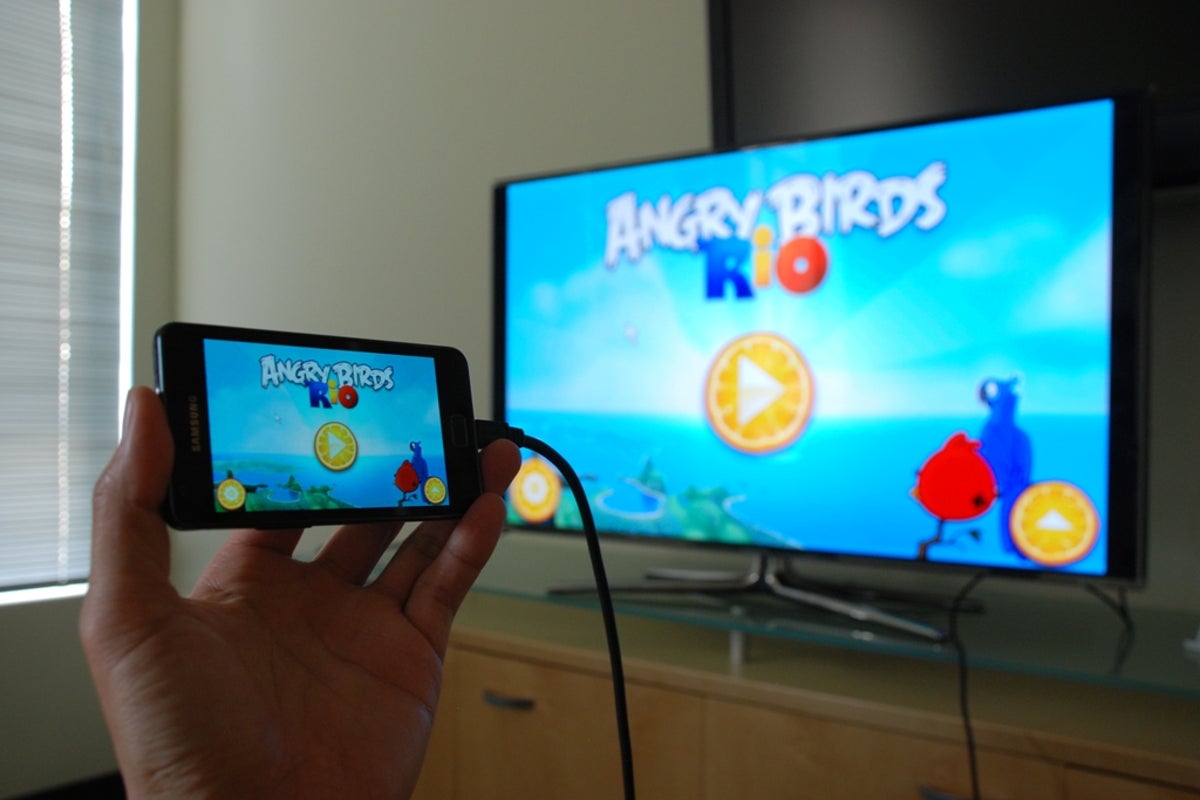MHL smartphone-to-TV connectivity demo (photos)
MHL Consortium demos how the technology works to turn the Samsung Galaxy II, or any other MHL-ready smartphone, into a complete digital hub when coupled with an MHL-enabled HDTV.

MHL is short for Mobile High-Definition Link, a new mobile audio/video interface standard--founded by Nokia, Samsung, Silicon Image, Sony, and Toshiba--for directly connecting portable devices, such as a smartphone or a tablet, to high-def displays. A supported device, such as the Samsung Galaxy II in the photo, can connect to any HDMI-ready HDTV via a cable and instantly mirror its content to the HDTV.
The content can be anything ranging from the device's home screen to videos, games, photos, and other media stored or streamed from the mobile device in high definition up to 1080p at 60Hz picture quality and 7.1-channel surround sound. The best thing about the MHL, compared with wireless display technology, such as WiDi or WHDI, is the fact that you can charge the phone at the same time and most importantly, MHL has a much broader support by major hardware vendors.
Many phones and TVs from HTC, Nokia, Samsung, Toshiba, and Sony currently on the market offer support for this standard now. Some devices can even have the support added via a firmware update.

